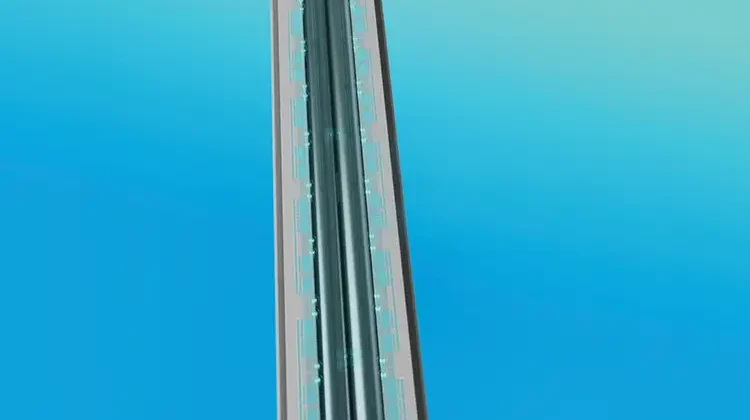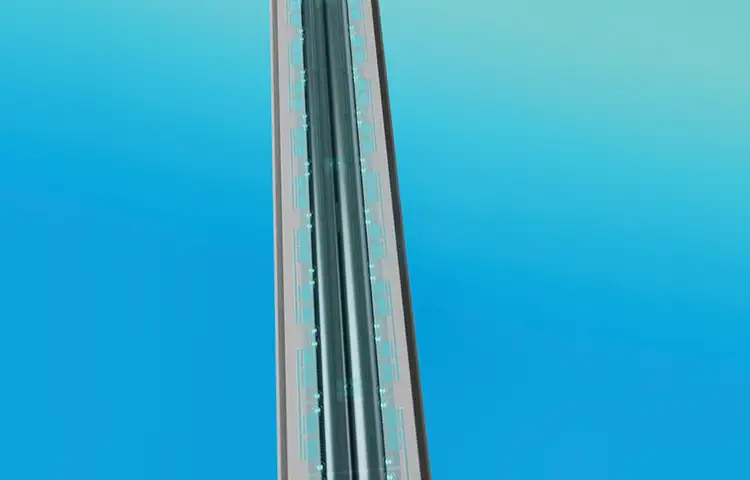
By Bob Waddington, product line leader, BW Converting
UV curing technology is essential to industrial manufacturing, as well as printing and packaging, offering efficiency, precision and sustainability in diverse applications. Over the years, UV LED systems have emerged as a transformative technology, promising energy savings, environmental benefits and operational improvements. Yet, despite these advancements, traditional UV lamp mercury arc systems continue to hold a vital role in specific applications where their broader wavelength coverage and unique capabilities remain unmatched.
This article explores the reasons behind the enduring coexistence of UV LED and arc technologies, their complementary strengths and the hybrid solutions that bridge the gap between these systems. Additionally, the role of emerging technologies, such as artificial intelligence (AI), in enhancing the efficiency and capabilities of UV curing systems is examined.
Introduction
The rise of UV LED technology has introduced significant advantages to the industrial manufacturing, printing and packaging industries, including reduced energy consumption, longer lifespans and lower environmental impact. However, despite its rapid adoption, UV LED technology is not yet capable of fully replacing arc systems.
One critical limitation lies in the narrow wavelength range of UV LED systems. LEDs operate monochromatically, typically in nm ranges of 365, 385, 395 and 405, making them effective for specific tasks but unsuitable for applications requiring a broader spectrum. By contrast, mercury arc systems provide a much wider wavelength output, extending across 100 nm or more. This makes mercury arc systems indispensable for processes requiring UV-B and UV-C wavelengths, such as sterilization and certain low-migration printing applications.
Moreover, certain photoinitiators used in low-migration coatings are not yet compatible with LED technology. This is relevant particularly in markets with stringent regulatory requirements, such as Europe, where low-migration solutions are critical for packaging. Additionally, mercury arc systems offer cost advantages for coatings and applications where affordability and versatility are key considerations.
While LEDs are advancing rapidly, predictions suggest it could take another 4-6 years before their technology matures enough to cover the full range of applications. Until then, mercury arc systems will remain critical for specialized tasks.
Complementary strengths drive coexistence

The continued use of mercury arc systems alongside UV LEDs reflects the complementary strengths of these technologies. In the current market, UV LEDs are preferred for applications where efficiency, heat management and environmental considerations take precedence. Low-heat applications, like in-mold labeling (IML) and shrink film, are particularly well-suited for LED curing. These systems offer significant advantages in curing applications that benefit from their precision, energy savings and reduced heat generation. However, mercury arc systems remain the go-to solution for tasks requiring broader wavelength coverage or specialized coatings.
This coexistence is not a matter of competition but rather a market-driven response to diverse needs. Each technology has its unique advantages. As LED technology improves, it will undoubtedly capture a larger market share, but mercury arc systems will continue to fill critical gaps in the meantime.
Hybrid solutions: Bridging the gap
To address the limitations of each technology while maximizing their strengths, hybrid UV curing systems have gained prominence. These systems are designed to accommodate both mercury arc and LED lamps, allowing users to transition seamlessly between the two technologies. For example, the author’s company’s Baldwin QuadCure Unity UV and Unity™ LED systems are hybrid solutions that leverage shared components, such as power supplies, mounts and connectors (see Figure 1). This approach simplifies the integration process and provides flexibility for businesses navigating the evolving landscape of UV curing.
These hybrid systems are particularly beneficial for companies looking to future-proof their operations. They allow users to switch between mercury arc and LED lamps as needed, without the need for an entirely new system.
While hybrid systems currently are focused on specific applications, future iterations are expected to expand to other printing platforms. This adaptability underscores the long-term value of hybrid solutions in an industry that continues to evolve.
Hot-swappable hybrid systems, which enable users to switch between mercury arc and LED lamps quickly and efficiently, represent another practical solution for businesses. These systems provide an interim pathway for companies awaiting the full maturation of LED technology. By allowing both technologies to coexist within a single system, hot-swappable solutions offer unmatched flexibility and address current limitations in LED technology, such as gaps in UV-B and UV-C wavelength coverage.
LEDs’ advantages – lower energy consumption, reduced heat generation and longer lifespans – make them the choice for many applications in the long term. However, until LEDs can fully cover the spectrum of industrial needs, hot-swappable systems will remain a critical bridge between the present and the future.
The role of artificial intelligence
Beyond hybrid and hot-swappable systems, advancements in artificial intelligence (AI) are poised to revolutionize the UV curing industry. AI already is being integrated into various aspects of system design, energy optimization and preventive maintenance. For example, AI can analyze data to identify trends in product life cycles, predict maintenance needs and streamline engineering processes.
The potential for AI-driven improvements is enormous, from reducing costs to accelerating innovation and enhancing system efficiency. These advancements align with the broader industry push toward smarter, more sustainable technologies. As AI continues to evolve, its role in UV curing is expected to grow, offering transformative benefits for manufacturers and end-users alike.
Looking ahead
The future of UV curing technology lies in balancing the strengths of traditional mercury arc systems with the innovations offered by UV LEDs and emerging technologies like AI. By embracing hybrid and hot-swappable solutions, companies can navigate this transitional phase with greater flexibility and efficiency. Meanwhile, the integration of AI promises to unlock new levels of performance and sustainability, setting the stage for the next generation of UV curing technologies.
Ultimately, it’s about meeting the needs of customers while staying ahead of industry trends.
Bob Waddington is the Product Line Leader for Curing and Drying at BW Converting. With extensive experience in UV curing technologies, Bob plays a pivotal role in developing innovative solutions that cater to the printing and packaging industries. For more information: www.bwconverting.com.

